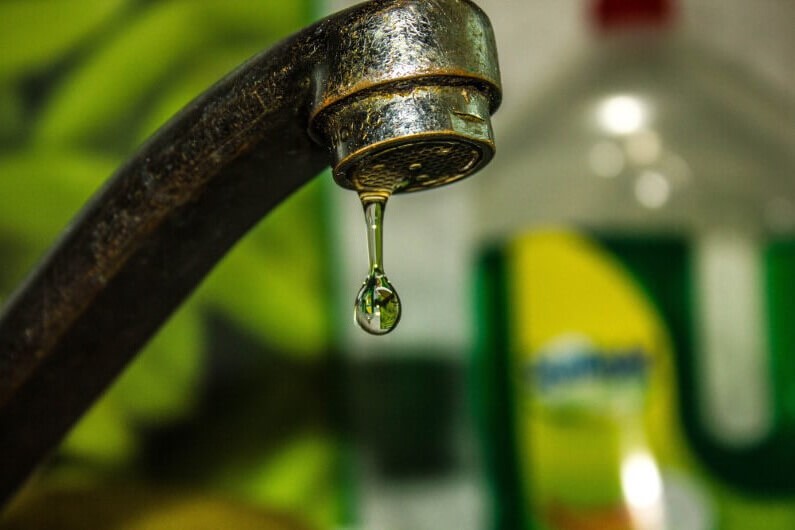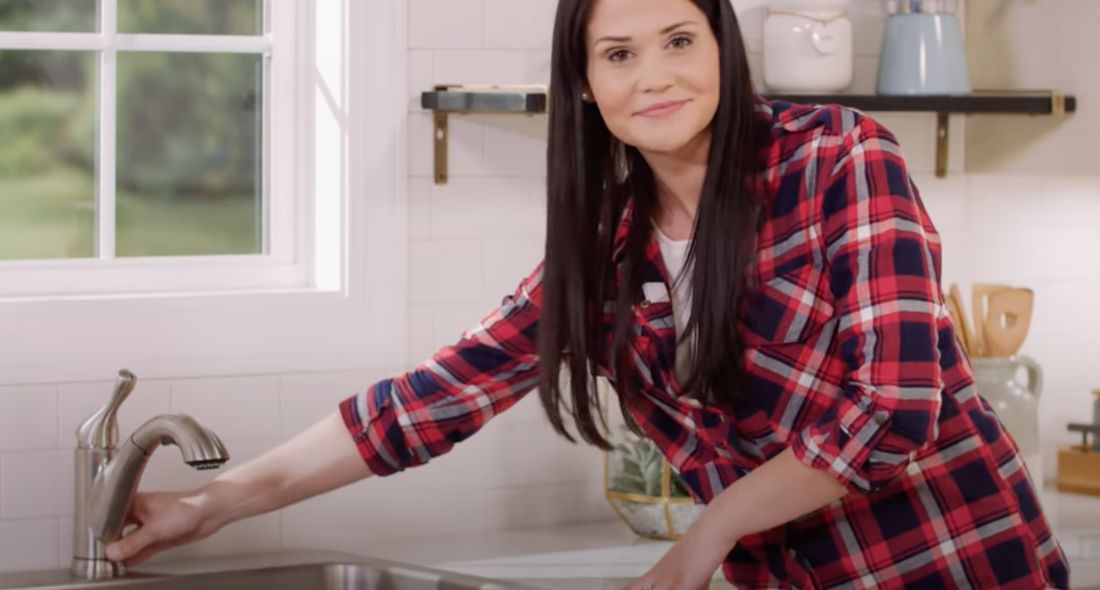Just how do you actually feel in regards to 4 Common Reasons for a Leaky Faucet?

Dripping faucets could seem like a small hassle, yet their influence exceeds simply the nuisance of the audio. From wasting water to sustaining unneeded economic prices and health risks, disregarding a leaking faucet can result in various consequences. In this short article, we'll delve into why it's crucial to resolve this common home issue promptly and successfully.
Wastefulness of Water
Environmental Effect
Leaking taps add dramatically to water waste. According to the Environmental Protection Agency (EPA), a single tap dripping at one drip per second can throw away greater than 3,000 gallons of water per year. This not just pressures water sources however likewise affects ecosystems and wild animals dependent on them.
Financial Costs
Raised Water Expenses
Beyond the environmental impact, dripping taps can inflate water bills significantly. The accumulated wastefulness in time translates into higher energy costs, which might have been stayed clear of with prompt repairs.
Potential Residential Property Damages
Additionally, extended leaking can cause damage to fixtures and surface areas bordering the faucet. Water accumulation can create discoloration, corrosion, and even architectural problems if left unattended, leading to additional fixing expenses.
Health and wellness Issues
Mold and Mildew Growth
The consistent presence of wetness from a trickling faucet develops a suitable environment for mold and mildew and mildew growth. These fungis not only jeopardize interior air quality yet also present wellness risks, especially for people with respiratory problems or allergic reactions.
Waterborne Diseases
Stagnant water in leaking taps can come to be a breeding place for bacteria and other pathogens, enhancing the danger of waterborne illness. Impurities such as Legionella microorganisms grow in stationary water, possibly resulting in significant diseases when ingested or breathed in.
DIY vs. Expert Repair
Advantages and disadvantages of Do It Yourself Repair Work
While some might try to fix a leaking tap themselves, do it yourself repairs come with their own collection of challenges. Without appropriate understanding and devices, do it yourself efforts can aggravate the issue or lead to incomplete repair work, extending the trouble.
Advantages of Working With a Professional Plumber
Working with an expert plumber guarantees that the underlying reason for the leaking faucet is addressed effectively. Plumbers have the expertise and tools to identify and repair tap concerns effectively, saving time and decreasing the threat of additional damage.
Step-by-Step Overview to Taking Care Of a Dripping Faucet
Devices Needed
Prior to attempting to fix a trickling faucet, collect the required devices, including an adjustable wrench, screwdrivers, substitute parts (such as washers or cartridges), and plumber's tape.
Usual Tap Issues and Their Solutions
Recognize the kind of tap and the particular issue triggering the drip. Common problems consist of damaged washing machines, corroded valve seats, or damaged O-rings. Refer to maker directions or on-line tutorials for detailed guidance on repairs.
Safety nets
Normal Maintenance Tips
To stop leaking faucets, execute routine upkeep such as cleaning aerators, evaluating for leaks, and changing worn-out parts without delay. Additionally, take into consideration installing water-saving gadgets or updating to much more effective components.
Importance of Prompt Fixes
Addressing dripping faucets as quickly as they're seen avoids additional water waste and prospective damages, inevitably conserving both water and cash in the future.
Influence On Residential Property Worth
Understanding of Well-Maintained Building
Keeping a residential property in good condition, consisting of dealing with maintenance issues like trickling taps, enhances its perceived worth and charm among possible purchasers or renters.
Impact on Resale Worth
Features with properly maintained plumbing fixtures, consisting of faucets, command greater resale values in the real estate market. Attending to dripping taps can contribute to a positive impact during property assessments and arrangements.
Ecological Duty
Specific Payment to Preservation
Taking obligation for dealing with leaking taps straightens with wider efforts towards water preservation and environmental sustainability. Every individual's activities collectively make a significant impact on preserving precious resources.
Sustainable Living Practices
By prioritizing timely repair work and embracing water-saving routines, individuals contribute to sustainable living practices that benefit both existing and future generations.
Verdict
Dealing with a leaking faucet surpasses plain comfort; it's a necessary action toward preserving water, lowering monetary costs, and guarding health and wellness and residential property. Whether with DIY repairs or specialist support, taking action to take care of dripping taps is a small yet impactful method to advertise accountable stewardship of sources and contribute to a much healthier, a lot more lasting future.
How to Fix a Dripping or Leaky Faucet
A leaking faucet is one of the most common problems that homeowners encounter, but it being commonplace doesn’t make it any less annoying. The constant drip drip drip of a leaking bathtub faucet, showerhead, or sink tap can disturb your home’s serenity. Left neglected, a dripping faucet can also result in higher water bills and discoloration or mold growth in your sink or plumbing fixtures.
Fortunately, you don’t have to be a trained plumber to know how to stop a dripping faucet. With some basic tools, replacement parts, and a little patience, leaky faucet repair is a breeze. In this article, we’ll explain what causes dripping faucets and how you can fix them.
What Causes a Leaking Faucet?
Kitchen and bathroom faucets come in all manner of designs, but most involve some combination of valves, O-rings, seals, and washers. The O-ring is usually the weakest link, but any one of these pieces can wear down over time. Heat, moisture, temperature fluctuations, minerals, mold, and movement can contribute to warping and corrosion, breaking the watertight seal. This just comes with the territory of being a homeowner. Everything is always subject to wear and tear, and some component parts of your appliances and fixtures need to be replaced on occasion. At least replacement O-rings are cheap!
More rarely, dripping faucets can be a symptom of excessively high water pressure. Were this the case in your home, you would probably notice that the leak is not isolated to one faucet. Water pressure issues are harder to resolve on your own. We recommend contacting a professional plumber if you suspect your water pressure is too high.
How to Fix a Dripping Faucet
Pipe wrench or monkey wrench Allen wrench set Screwdrivers Old towel or rag Shut off the water.
Before you do anything, you need to turn off the water to keep from drenching your kitchen or bathroom. You should find a valve under the sink and against the wall. Once you’ve turned this valve, try turning the faucet on to confirm that the water source has been cut off.
If you can’t locate your local valve for the faucet you’re working on, you can always shut off the water to the house at the main valve. Of course, this will prohibit anyone from using the sinks, showers, or toilets while you’re working on the faucet that’s giving you trouble.
Plug or block the drain.
You’ll be disassembling the faucet and removing some small bits of hardware. Plug the drain with a stopper or rag to avoid the possibility of a small screw falling into your P-trap.
Take apart the faucet assembly.
There are several varieties of kitchen and bathroom faucets, each with its own manner of assembly. For detailed instructions on how to disassemble your faucet, you can refer to the fixture’s manual or contact the manufacturer. If you know whether you have a ball, disc, cartridge, or compression faucet, you can find detailed schematics online.
In general, you need to begin by removing the faucet handles. You might notice a small screw that you’ll need to remove with a screwdriver or Allen wrench. If you don’t see any visible securing hardware, it’s likely hidden under a decorative cap that can be unscrewed or popped off with flathead screwdriver.
Remove each piece methodically, consulting a schematic when necessary. Take notes or arrange the pieces in such a way to make it easier to correctly reassemble the faucet later.
Remove the cartridge.
Once you’ve removed the handles and securing hardware, you should be able to remove the valve cartridge or stem. Some cartridges will slide right out. Other faucet models will require you to loosen a nut with a pipe wrench before you can remove the valve stem.
Examine the exposed hardware.
With the cartridge or stem removed, inspect the component parts. Check the rubber O-rings for wear and tear. Also examine the seat washer for corrosion or other damage. These pieces are usually the responsible parties for a dripping faucet, but it’s worth inspecting the other component parts while you have the faucet disassembled.
Find replacement parts.
Once you’ve identified which faucet component has failed, find an identical replacement. Your local hardware store should have O-rings, seat washers, and other standard components in stock. If you have a luxury or uncommon faucet, you may have to contact the manufacturer for a replacement part.
It’s a good idea to take your old parts with you to the hardware store so you can compare them with the store’s inventory and be sure you’re purchasing the correct replacement.
Reassemble the faucet.
With your new parts in hand, reconstruct the faucet and handles. Don’t be tempted to overtighten screws or nuts. You might think this could create a better seal, but it can instead damage or bend a delicate part of the assembly and create a new problem for you.
Turn on the water and test the faucet.
The only thing left to do is test your work. Unplug the sink, turn the water back on, and try the faucet. Congratulate yourself on a job well done!
https://www.libertyhomeguard.com/how-to-fix-a-dripping-or-leaky-faucet/

Hopefully you enjoyed our post about Why Is It Important To Fix Your Leaking Tap/Faucet?. Many thanks for spending some time to read our blog post. Sharing is caring. One never knows, you may very well be helping someone out. We thank you for reading our article about Why It's Important to Fix Leaky Faucets.